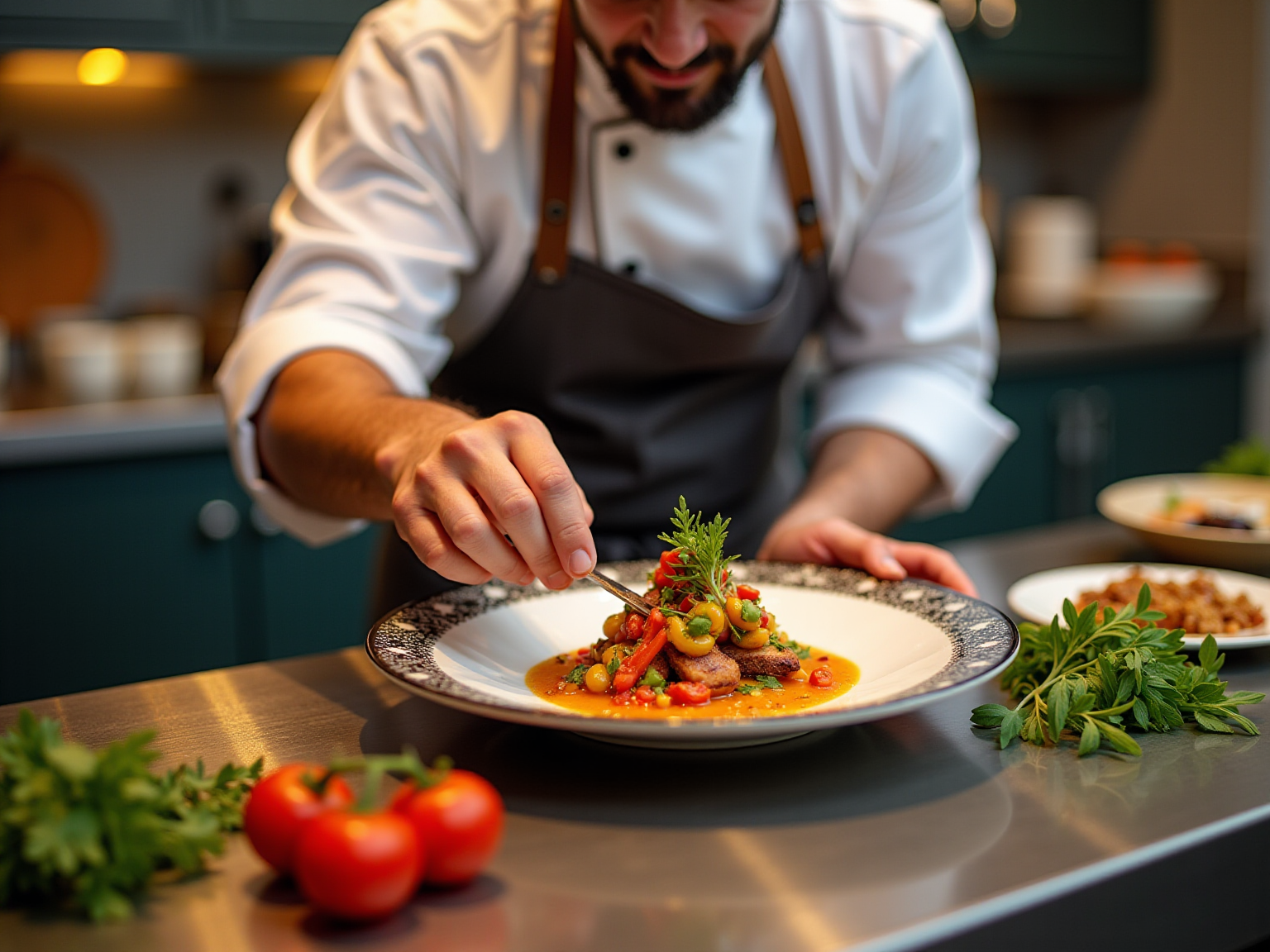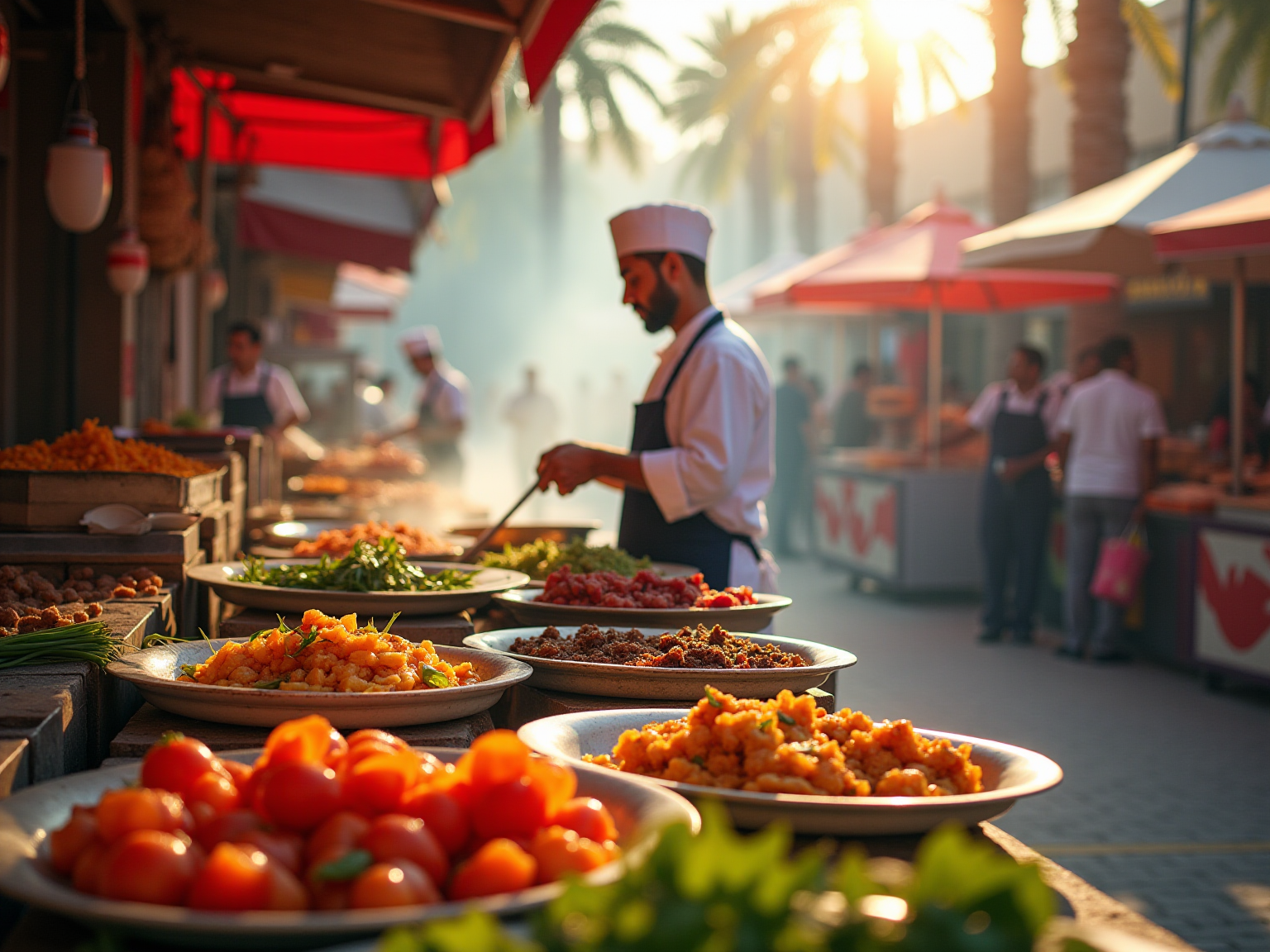Digital Branding Strategies
9 Best Practices for Web Design in the UAE Food and Beverage Sector
Overview
This article delves into the best practices for web design specifically tailored for the food and beverage sector in the UAE. It underscores the critical importance of:
- User-centric design
- Responsive layouts
- SEO optimization
- High-quality visuals
- Adherence to local regulations
These elements are essential for enhancing customer engagement and amplifying brand visibility in an increasingly competitive market.
Introduction
In an increasingly digital world, food and beverage brands confront the formidable challenge of distinguishing themselves in a saturated marketplace while effectively engaging their audience. As consumers grow more discerning, the imperative for innovative branding and marketing strategies has reached unprecedented levels.
Enter WonderEight, a premier digital agency in the UAE, committed to empowering these brands through bespoke solutions that encompass everything from user-centric design and search engine optimization to high-quality visuals and adherence to local regulations.
With the industry poised for significant investments in technology and shifting consumer preferences, understanding how to leverage these digital tools can profoundly impact the establishment of lasting connections and the enhancement of brand loyalty.
This article explores the comprehensive strategies that can elevate food and beverage brands, ensuring they not only capture attention but also cultivate meaningful relationships with their customers.
WonderEight: Comprehensive Digital Solutions for Food and Beverage Brands
WonderEight stands out as a premier digital agency in the UAE, providing best practices for web design in the UAE food and beverage sector along with a comprehensive suite of branding and digital solutions tailored specifically for food and beverage companies. Their expertise encompasses product evaluations, development planning, and targeted digital marketing strategies, all designed to address the unique challenges of best practices for web design in the UAE food and beverage sector. By harnessing innovative design and technology, WonderEight empowers businesses to forge impactful identities that resonate with consumers, thereby enhancing their competitive edge in a rapidly evolving market.
Recent statistics reveal that 57% of customers are willing to spend more on companies they feel a connection with, underscoring the critical importance of effective identity creation in nurturing consumer loyalty and driving sales. WonderEight’s integrated branding and marketing solutions—including social media management, e-commerce planning, digital audits, and SEO consultancy—are meticulously crafted as best practices for web design in the UAE food and beverage sector, ensuring that companies not only capture attention but also establish enduring relationships with their audience. Notable case studies, such as their partnership with Quaker Oats, illustrate how WonderEight’s bespoke approaches, rooted in creativity, strategic thinking, and industry expertise, significantly boost consumer engagement and market visibility.
As the culinary sector anticipates substantial investments in innovative technologies for 2025, WonderEight’s commitment to blending creativity with strategic insight positions them as a leader in delivering effective branding solutions. Their extensive digital marketing and technology offerings, ranging from digital audits to e-commerce strategies, ensure alignment with the specific needs of culinary and beverage entities, thereby enhancing visibility and fostering deeper connections with consumers, in accordance with the best practices for web design in the UAE food and beverage sector. To discover how WonderEight can elevate your brand’s presence, contact us today.
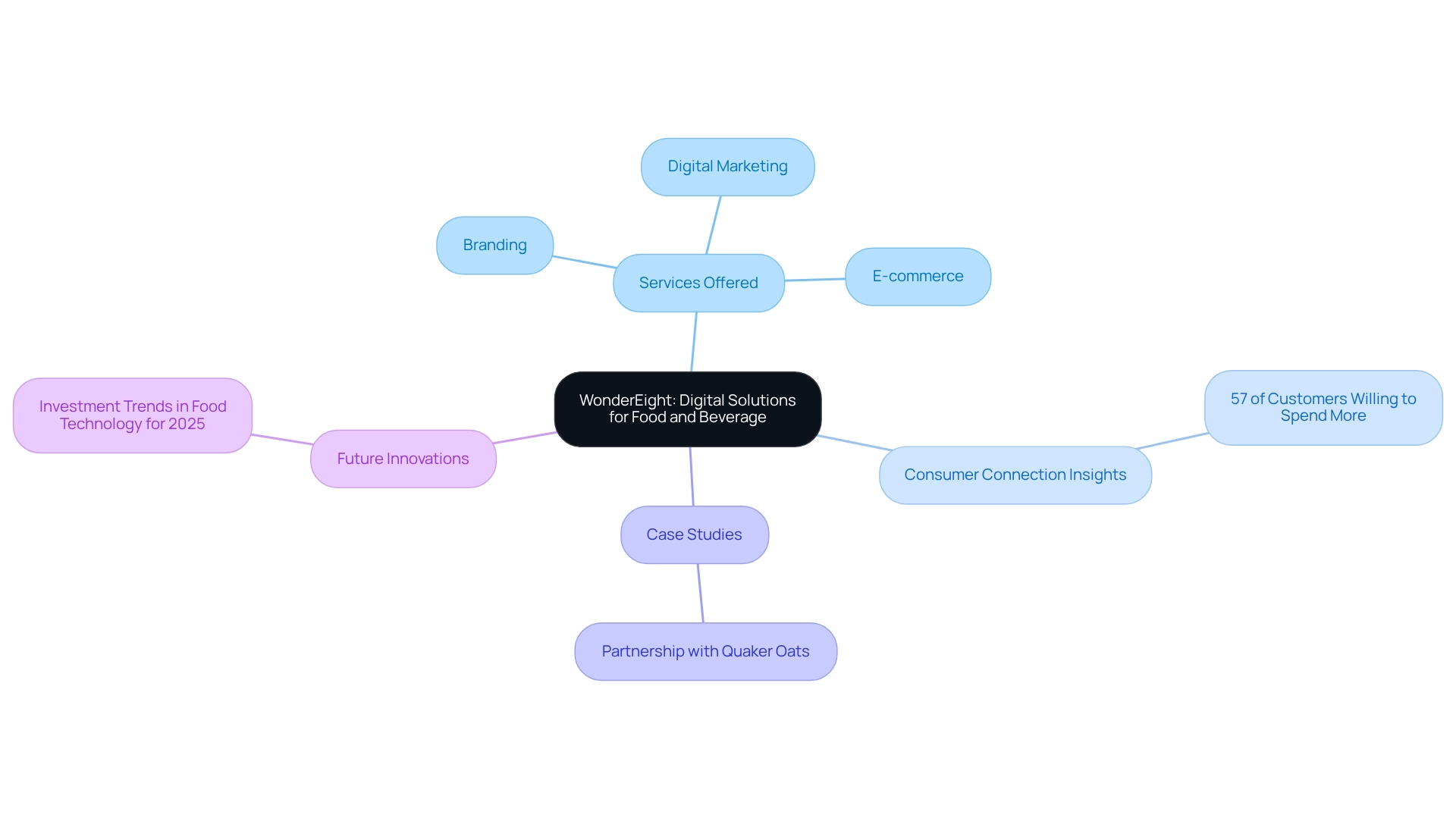
Implement User-Centric Design Principles to Enhance Engagement
Applying user-focused design principles is essential for understanding and addressing the needs of the target audience in the beverage industry. This approach begins with thorough research on users and usability testing, which provide valuable insights into preferences and behaviors. Key elements of effective user-centric design include:
- Intuitive navigation
- Clear calls to action
- Responsive layouts that seamlessly adapt to various devices
By prioritizing customer experience, food and beverage companies can utilize best practices for web design in the UAE food and beverage sector to create engaging websites that not only attract visitors but also encourage them to explore and interact with the content. Statistics indicate that AI-driven loyalty programs can boost retention rates by 17%, underscoring the importance of a meticulously crafted experience in fostering customer loyalty. Noteworthy case studies, such as the tailored marketing strategy for Quaker Oats, illustrate how user-centric design can significantly improve brand positioning and consumer engagement. This strategy, which focused on understanding consumer needs, resulted in enhanced market presence and increased customer engagement for Quaker Oats.
Furthermore, integrating AI-powered features such as chatbots and personalized suggestions can accelerate response times and enhance engagement, further enriching the user experience. By focusing on these principles, companies can apply the best practices for web design in the UAE food and beverage sector to ensure their websites are not only visually appealing but also strategically effective in promoting visitor engagement. WonderEight’s dedication to innovation in branding and digital solutions positions them as a leader in implementing these user-centric design principles, as evidenced by their successful collaborations with clients like Castania and Motorola.
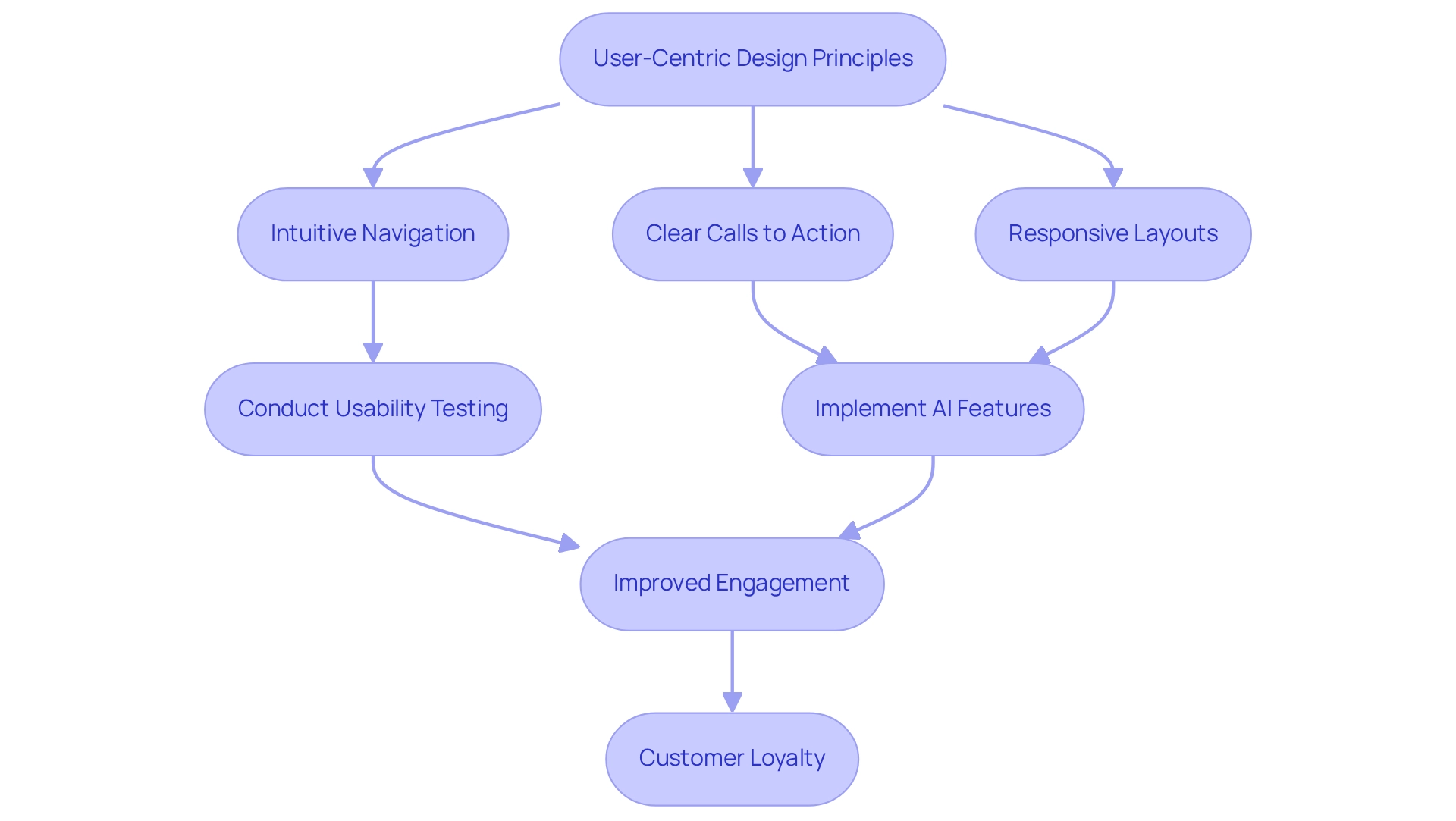
Adopt Responsive Design for Multi-Device Compatibility
Implementing responsive design is essential for ensuring that websites function seamlessly across a range of devices, including smartphones, tablets, and desktops. This design strategy employs flexible grids, adaptive images, and CSS media queries to create layouts that fluidly adjust to varying screen sizes. By delivering a consistent experience for consumers, beverage companies can connect with a wider audience and significantly enhance retention rates—critical for boosting conversions in a competitive marketplace.
Statistics reveal that a single responsive website can be up to 50% cheaper to maintain than separate mobile and desktop versions, presenting an economical solution. Furthermore, with mobile device usage in the UAE approaching 90% among internet users, particularly in the beverage sector, companies must prioritize multi-device compatibility to remain relevant. Successful applications of responsive design can be observed in leading culinary companies like Almarai and Americana, which have optimized their websites to accommodate different devices, ensuring that visitors enjoy a smooth experience regardless of how they access the site.
As we approach 2025, the integration of cutting-edge technologies such as AI-driven personalization and voice search compatibility will further enhance the effectiveness of responsive design. These innovations not only boost user engagement but also align with Google’s latest SEO updates, which favor sites that offer a seamless user experience across devices. By adopting the best practices for web design in the UAE food and beverage sector, beverage companies can markedly improve their online visibility and customer satisfaction.
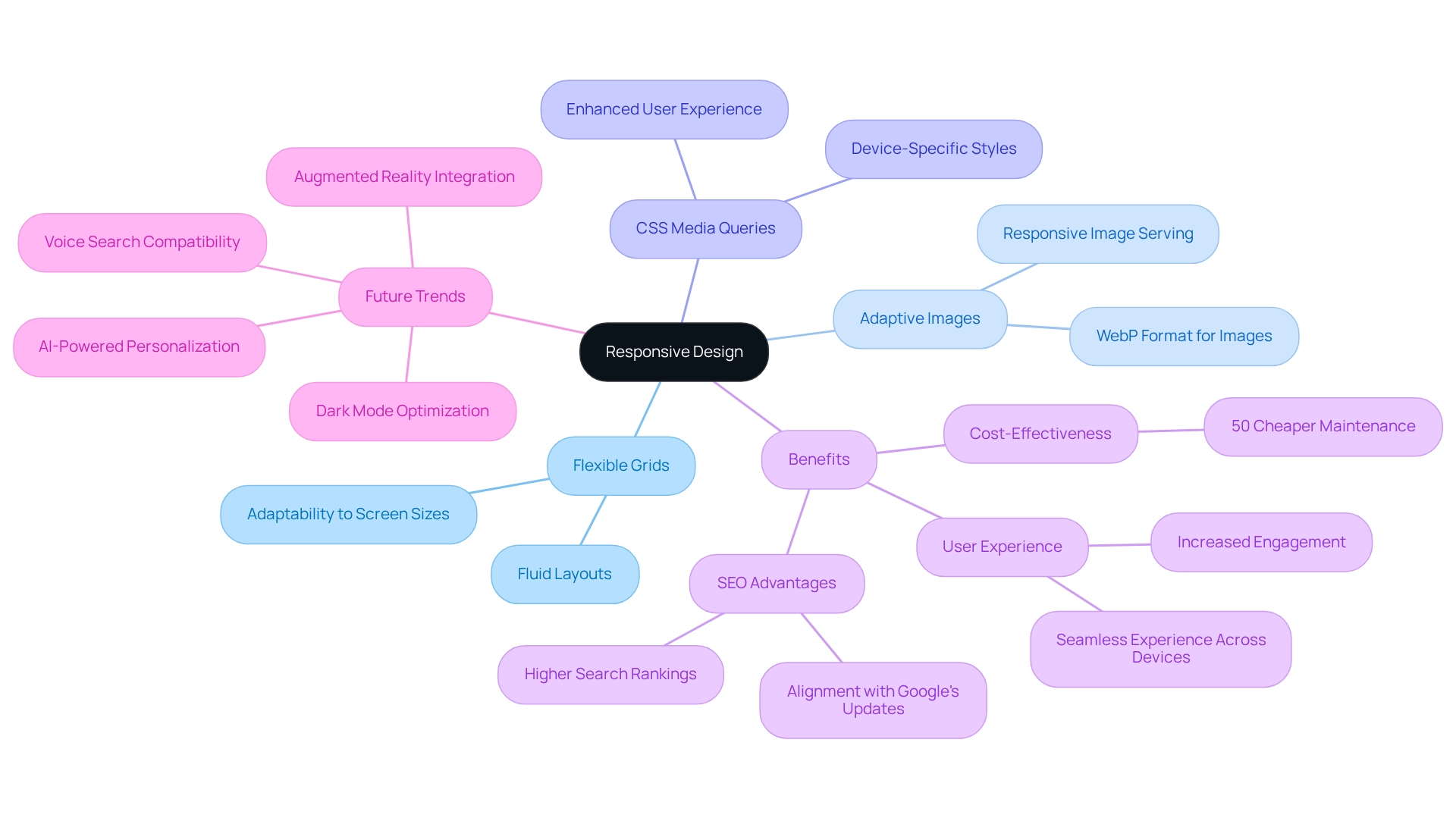
Optimize for Search Engines to Boost Online Visibility
To effectively enhance a website for search engines, culinary and beverage companies must apply the best practices for web design in the UAE food and beverage sector, including:
- Thorough keyword research
- On-page optimization
- Robust link-building techniques
Prioritizing the creation of high-quality, relevant content that resonates with the target audience is crucial. This content should not only address consumer needs but also incorporate keywords that enhance search visibility.
Optimizing meta tags, headers, and images is vital for improving search engine rankings, as these elements play a significant role in how search engines interpret and rank web pages. In reality, statistics show that 69% of leads for firms in the manufacturing industry, including beverage companies, come from organic channels, highlighting the significance of efficient SEO practices.
Moreover, current trends show that consumers increasingly trust online reviews, equating their credibility to personal recommendations. This highlights the necessity for brands to cultivate a strong online presence through engaging content and positive customer interactions. As Bakir Djulich observes, ‘79% of customers rely on blogs for information about cuisine,’ underscoring the significance of content creation in establishing trust and authority.
Effective keyword approaches are also essential; for example, 82% of Millennials use platforms such as YouTube for food-related content, showcasing the influence of visual media in consumer interaction. By utilizing these insights and concentrating on SEO tactics customized for the beverage industry, including comprehensive keyword research, companies can adopt best practices for web design in the UAE food and beverage sector to greatly improve their online presence, draw more visitors, and ultimately boost conversion rates.
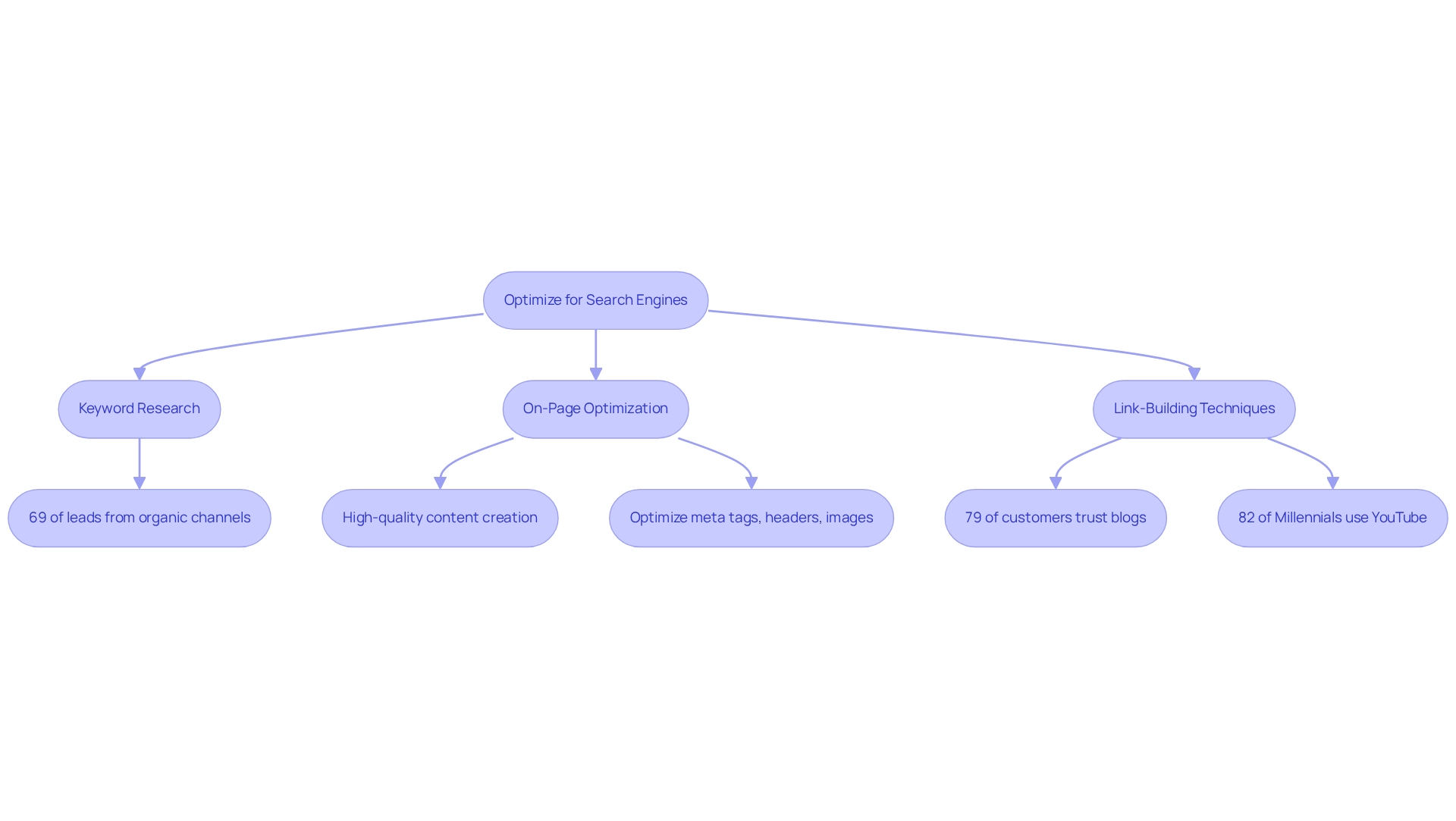
Utilize High-Quality Visuals to Enhance Brand Appeal
In the competitive landscape of the food and beverage industry, leveraging high-quality visuals is essential for companies striving to apply the best practices for web design in the UAE food and beverage sector to establish a compelling online presence. Incorporating professional photography of dishes, engaging videos, and striking graphics not only enhances the aesthetic appeal of a website but also aligns with the best practices for web design in the UAE food and beverage sector, effectively conveying the identity and values of the company.
As Austin Kleon aptly states, “Your work is something you do, not who you are,” underscoring that professional photography encapsulates the essence of an identity rather than merely serving as a marketing tool. Investing in quality visuals can lead to significant improvements in user engagement and sales performance. Notably, companies prioritizing professional food photography often experience a marked increase in audience interaction and conversion rates.
Current trends reveal that adhering to the best practices for web design in the UAE food and beverage sector shows that visually rich content is more likely to capture consumer attention, with statistics indicating that high-quality images can boost engagement by up to 94%. Furthermore, expert opinions emphasize that compelling visuals, aligned with the best practices for web design in the UAE food and beverage sector, are crucial for storytelling in branding, facilitating emotional connections between consumers and products.
Significant case studies, such as the successful marketing strategy employed by Quaker Oats, demonstrate how powerful visuals can enhance market positioning and foster consumer loyalty. The visual approach applied in this case not only bolstered recognition of the company but also nurtured a stronger emotional bond with consumers.
As we advance through 2025, the latest trends in culinary photography highlight the best practices for web design in the UAE food and beverage sector, showcasing the importance of authenticity and creativity in connecting brands with their target audience on a deeper level. Investing in high-quality culinary photography transcends mere visual appeal; it yields valuable outcomes in terms of increased sales and enhanced audience interaction.
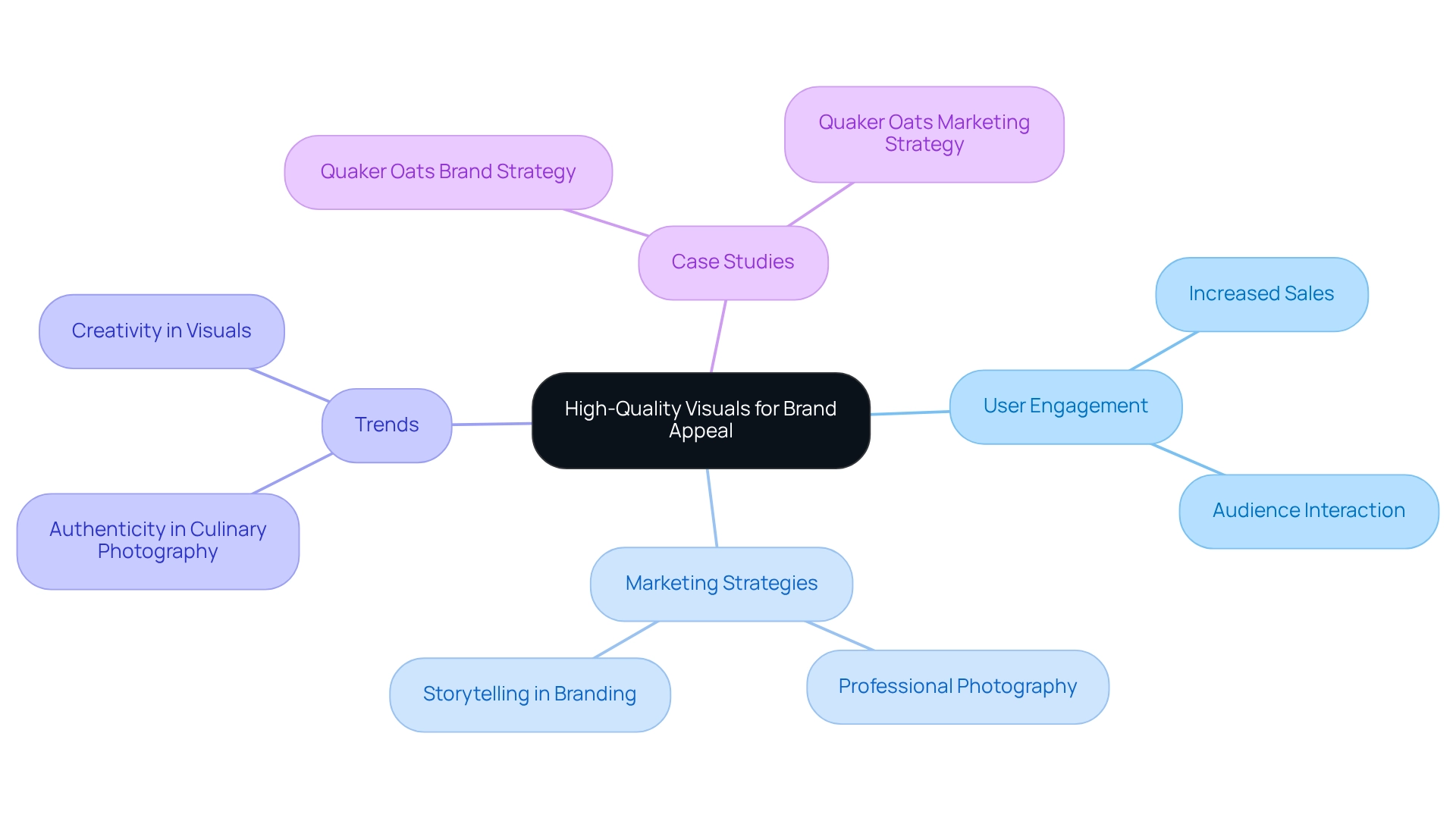
Ensure Streamlined Navigation for Improved User Experience
To create a positive visitor experience, food and beverage websites must prioritize streamlined navigation, enabling guests to find information with ease. This involves implementing clear labels, establishing a logical hierarchy, and incorporating a robust search function. Research indicates that slow-loading websites can lead to a staggering $2.6 billion revenue loss annually, underscoring the need for efficient navigation that minimizes the number of clicks required to access essential content. By concentrating on these navigation techniques, brands can improve usability, retaining individuals’ interest and motivating them to discover their offerings more.
Current trends emphasize the importance of search navigation, allowing individuals to input keywords or phrases to swiftly find specific content. For instance, Casio’s integrated search navigation button illustrates how effective search functionality can enhance the experience of individuals. As Jefferson Han, CEO and Co-Founder of perceptiveIO, states, “If you watched companies such as Sony and Samsung grow, they focused first on features and then on industrial design, which made their products look and feel better.” This highlights the significance of prioritizing features in web design to improve the experience for visitors.
Furthermore, as the web design sector continues to advance, food and beverage companies striving to distinguish themselves in a competitive market will find that embracing the best practices for web design in the UAE food and beverage sector is essential for efficient navigation. Brand managers ought to consider applying these practical suggestions:
- Ensure that navigation menus are straightforward and comprehensible.
- Employ drop-down menus for subcategories.
- Consistently evaluate the website’s navigation with actual individuals to pinpoint areas for enhancement.
By ensuring logical hierarchy and intuitive design, companies can significantly enhance customer satisfaction and drive engagement in 2025 and beyond.

Integrate Social Media for Enhanced Customer Interaction
Incorporating social media into a website significantly boosts customer interaction and engagement for food and beverage companies. By integrating features such as social sharing buttons, live feeds, and direct links to social profiles, companies not only encourage users to share content but also facilitate direct communication with their audiences. This strategic approach nurtures a vibrant online community, which is essential for developing customer loyalty and increasing website traffic.
Current trends reveal that companies with an active presence across multiple social channels can amplify their reach by 4.2 times, underscoring the critical necessity of social media integration. Moreover, the utilization of QR code menu software has been shown to enhance customer experience and visibility, streamlining patrons’ engagement with offerings. This software can be effectively promoted through social media channels, thereby enhancing overall customer interaction.
Successful examples of customer engagement through social media underscore the efficacy of these strategies. Companies that craft genuine stories connect more profoundly with their audiences, fostering greater loyalty. A recent case study highlights how these storytelling initiatives create emotional connections with consumers. Furthermore, Claire emphasizes, “Establish your account and connect with more customers today using MENU TIGER,” reinforcing the practical advantages of social media interaction. As we approach 2025, the integration of social media into food and beverage websites will not only enhance customer engagement but also significantly influence website traffic, making it one of the best practices for web design in the UAE food and beverage sector.
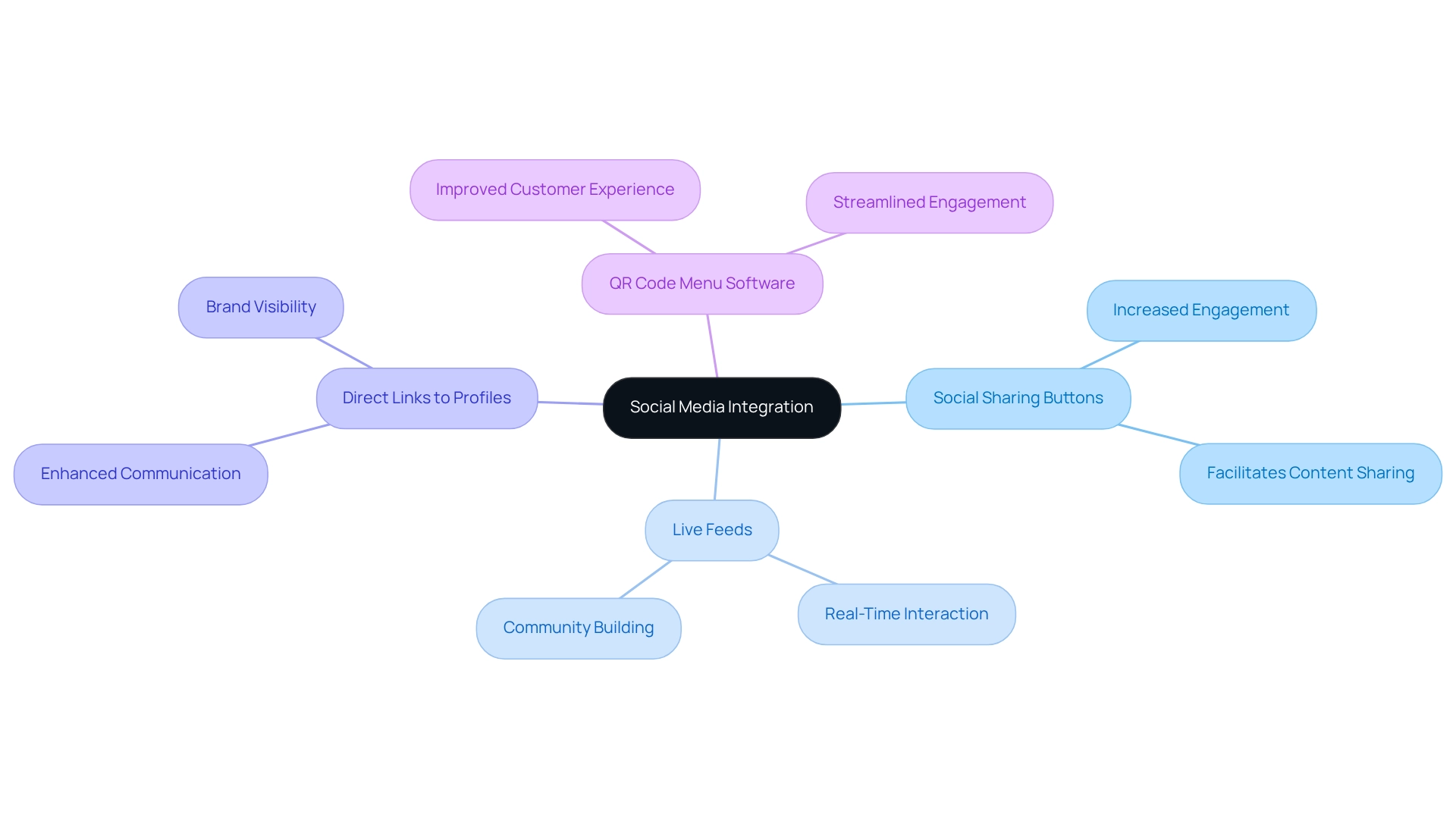
Maintain Fresh Content to Engage Visitors
Maintaining fresh content is essential for engaging visitors and encouraging repeat visits. Food and beverage companies must consistently update their websites with new blog posts, menu items, promotions, and events. This practice not only keeps the audience informed but also signals to search engines that the site is active, significantly enhancing SEO rankings.
Research indicates that 60% of U.S. consumers request delivery or takeout weekly, an increase from just over 50% five years ago, underscoring the necessity for companies to adapt to shifting consumer preferences through timely updates. By providing valuable and relevant information, brands can boost user engagement and cultivate a loyal customer base.
As competition intensifies—45% of food industry operators anticipate increased rivalry in 2024—leveraging fresh content becomes a vital strategy for standing out in a crowded market. This urgency is further emphasized by the need for innovative branding strategies.
Moreover, integrating user-generated content (UGC) can enhance brand visibility and connection with customers; research shows that brands utilizing UGC are better positioned for sustainable growth.
In 2025, the best practices for web design in the UAE food and beverage sector will include:
- Maintaining engaging content through regular updates
- Strategic use of UGC
- A focus on sustainability, as 68.3% of restaurant customers are willing to spend more at establishments that prioritize sustainable practices.

Leverage Analytics Tools for Data-Driven Insights
Utilizing analytics tools is paramount for gaining insights into user behavior and enhancing website performance. To effectively monitor visitor demographics, behaviors, and conversion rates, brands in the food and beverage sector should adopt the best practices for web design in the UAE food and beverage sector, utilizing platforms like Google Analytics. This data not only informs marketing strategies but also guides content development and website design improvements.
A study by Google reveals that businesses generate an average of $2 in revenue for every $1 spent on Google Ads, underscoring the effectiveness of well-executed PPC strategies. By adopting a data-driven approach, food and beverage companies can significantly bolster their online presence by utilizing best practices for web design in the UAE food and beverage sector to effectively meet customer needs.
As we approach 2025, the emphasis on data-driven insights becomes increasingly critical; companies that harness these tools can enhance their marketing efforts and achieve measurable outcomes. Successful case studies, such as the comprehensive campaign for Quaker Oats, exemplify how analytics tools have been adeptly utilized to reinforce market presence and enhance consumer engagement. This highlights the necessity of informed decision-making in today’s competitive landscape.

Ensure Compliance with Local Regulations and Standards
Adhering to local regulations and standards is crucial for beverage companies operating in the UAE. This encompasses compliance with safety laws, labeling standards, and regulations governing online product promotion. Staying informed about legislative changes is essential; companies must proactively adjust their operations and marketing strategies accordingly. For instance, certification is vital to confirm that products are sourced from approved and inspected vendors, underscoring the importance of strict compliance protocols.
Digital records and monitoring tools significantly enhance the oversight of daily safety tasks, ensuring that companies effectively meet regulatory expectations. By prioritizing compliance, businesses not only build trust with consumers but also mitigate the risk of legal challenges. Effective adjustments to safety regulations are illustrated in several case studies, such as the extensive campaign for Quaker Oats, which successfully communicated the company’s commitment to safety and quality.
As we advance through 2025, the landscape of safety regulations in the UAE continues to evolve, making it imperative for companies in the food and beverage sector to integrate the best practices for web design in the UAE food and beverage sector into their digital marketing strategies. As Benjamin Franklin wisely noted, “An ounce of prevention is worth a pound of cure,” emphasizing that proactive compliance can yield significant long-term benefits for food and beverage brands.
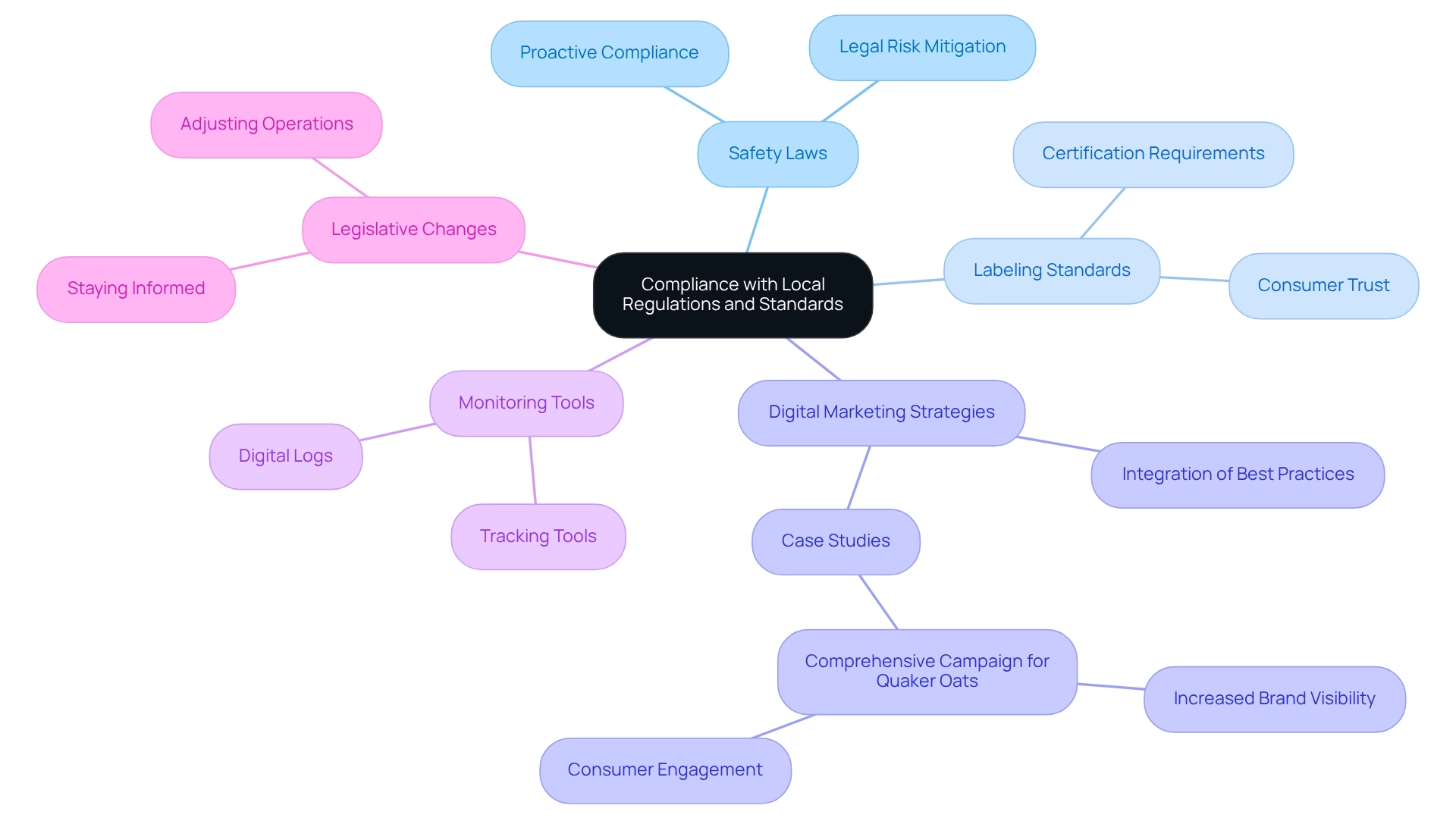
Conclusion
The landscape of food and beverage branding is undergoing a significant transformation, with digital solutions emerging as indispensable for brands aiming to excel in a fiercely competitive market. By implementing comprehensive strategies—such as user-centric design, responsive layouts, and effective SEO—food and beverage brands can markedly enhance their online visibility and foster consumer engagement. High-quality visuals paired with streamlined navigation contribute to a compelling user experience, nurturing deeper connections and loyalty among customers.
As the industry braces for substantial technological investments, embracing innovative practices becomes paramount. The integration of social media and the maintenance of fresh content not only keep brands relevant but also fortify community ties, ultimately driving traffic and boosting sales. Furthermore, leveraging analytics tools empowers brands to make data-driven decisions that refine their marketing strategies and elevate overall performance.
Compliance with local regulations stands as a critical element that must not be overlooked. Adhering to safety standards and ensuring transparency cultivates consumer trust, which is essential for long-term success. By executing these comprehensive strategies, food and beverage brands can effectively position themselves in the digital landscape, ensuring they not only capture attention but also cultivate meaningful, lasting relationships with their audience.
Frequently Asked Questions
What services does WonderEight offer for the food and beverage sector in the UAE?
WonderEight provides web design best practices, branding solutions, product evaluations, development planning, and targeted digital marketing strategies tailored specifically for food and beverage companies.
How does WonderEight help businesses in the food and beverage sector?
WonderEight empowers businesses by creating impactful identities that resonate with consumers, enhancing their competitive edge through innovative design and technology.
What is the significance of effective identity creation for companies?
Effective identity creation is crucial as 57% of customers are willing to spend more on companies they feel a connection with, which helps nurture consumer loyalty and drive sales.
What types of digital marketing solutions does WonderEight provide?
WonderEight offers integrated branding and marketing solutions including social media management, e-commerce planning, digital audits, and SEO consultancy.
Can you provide an example of WonderEight’s successful collaboration?
Notable case studies include their partnership with Quaker Oats, which demonstrated how bespoke approaches can significantly boost consumer engagement and market visibility.
What design principles are essential for the beverage industry?
Key elements of effective user-centric design include intuitive navigation, clear calls to action, and responsive layouts that adapt to various devices.
How can user-centric design impact customer loyalty?
AI-driven loyalty programs can boost retention rates by 17%, highlighting the importance of a meticulously crafted experience in fostering customer loyalty.
Why is implementing responsive design important?
Responsive design ensures websites function seamlessly across devices, enhancing user experience and connecting with a wider audience, which is critical for retention and conversions.
What are the cost benefits of responsive design?
A single responsive website can be up to 50% cheaper to maintain than separate mobile and desktop versions, making it an economical solution.
How does mobile device usage in the UAE affect web design strategies?
With mobile device usage in the UAE approaching 90% among internet users, companies must prioritize multi-device compatibility to remain relevant and enhance customer satisfaction.

